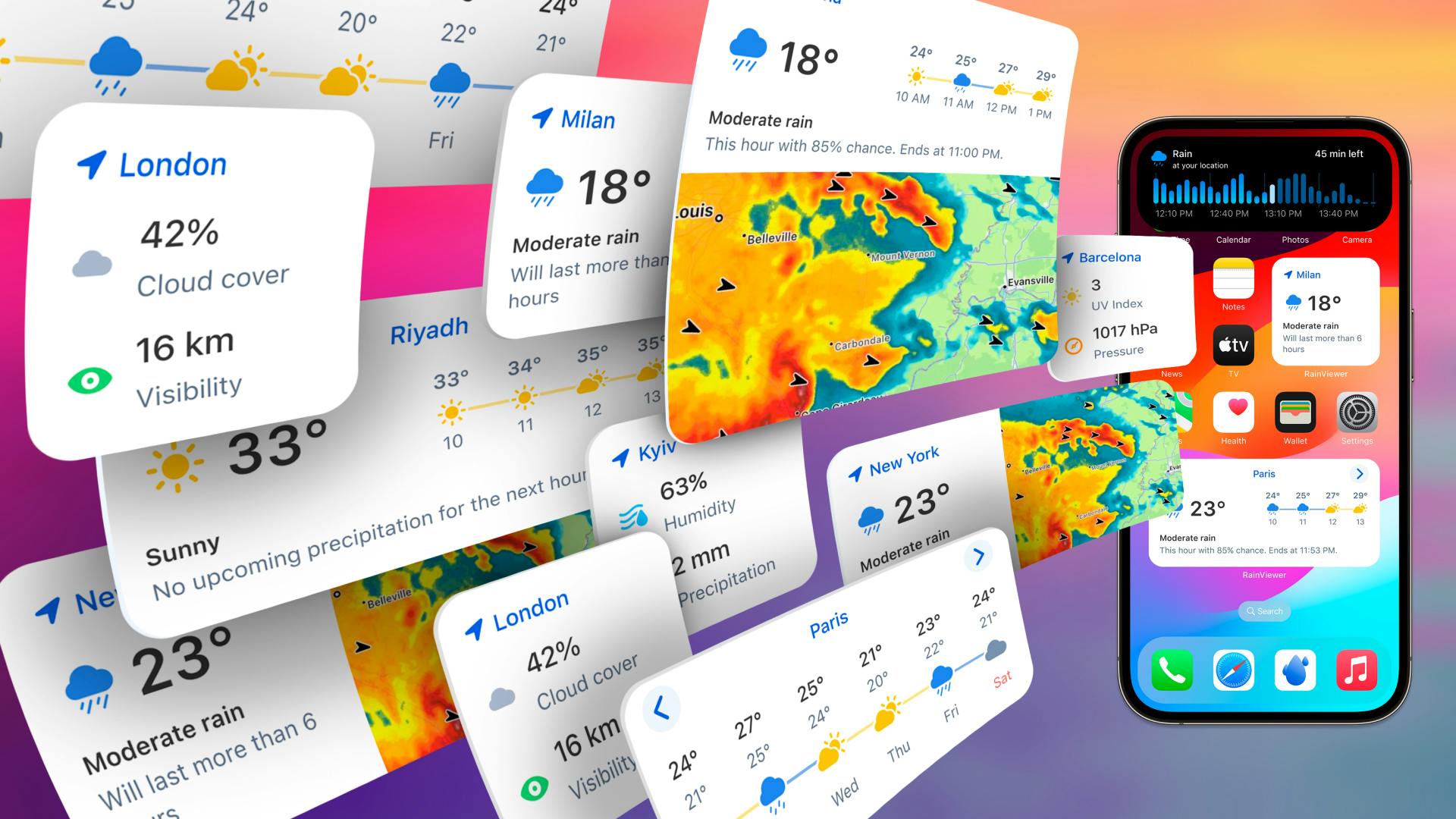How We Built Mobile Weather Widgets That Improved Apple’s

In product development, some features evolve naturally over time – others challenge your assumptions from the ground up. Building weather widgets turned out to be the latter.
\
In our team, we had long focused on radar accuracy, high-frequency data updates, and real-time storm tracking. But as the user base grew, especially among those who check forecasts multiple times a day, one use case became impossible to ignore: the need to access weather information instantly, without even opening the app.
\
That requirement led us to rethink how we deliver data on mobile devices. We didn’t want to create “mini versions” of the app – we wanted to surface the most relevant insights in the most accessible way possible.
Understanding the Demand for Instant Weather Access
We’ve always believed that weather data should be accessible at a glance – not buried in menus. That’s why our app Rain Viewer offered home screen widgets on Android as far back as 2016, long before it became a standard expectation.
\
But in late 2021, we started noticing a new pattern in our support inbox: \n “Does your app offer a radar widget for iPhone?” \n “Can I replace Apple’s widget with yours?”
\
At the time, Apple had only recently introduced widget support on iOS. We were already building ahead of the curve, preparing native widgets to meet that demand the moment it became technically possible.
\
Our users – weather geeks, storm chasers, data-driven planners – don’t wait for weather to happen. They track it like others track markets. And they needed fast, at-a-glance access across all platforms.
The Goal: Not Just Improving, But Redefining Widgets
We didn’t want to simply replicate Apple’s removed feature – we aimed to build a better, more customizable experience. That meant:
- Ultra-fast data updates (every 15 minutes for all users)
- Completely free radar map widget
- Full customization: map type, opacity, zoom level, and radar layers
- Adaptive design for both Android and iOS platforms
\
Our north star? Precision, personalization, and instant readability.
Technical Challenges: Widgets ≠ Mini Apps
Here’s the first reality check: mobile widgets are not full-fledged applications. Their functionality is limited by system restrictions. On Android, widgets run with restricted execution; on iOS, even more so – they’re essentially static views that need to update in the background, asynchronously, with extremely limited interactivity.
\
Our core challenges included:
- Battery-efficient background updates \n Widgets can’t just ping the server every minute. We had to implement intelligent background refresh logic based on user location, widget type, and forecast intervals.
\
- Dynamic theming & accessibility \n On Android, we leaned into Material You and Dynamic Color, so widgets would automatically adapt to the user’s wallpaper and theme preferences.
\
- Radar rendering inside a static canvas \n This was particularly tricky. We had to optimize radar map generation on the server side, compress it efficiently, and deliver it in real-time to a static canvas view that could scale across device resolutions without pixelation.
The Design Approach: Function Follows Focus
Every widget we built had a job to do. We created a clear taxonomy:
- Nowcast Widget: Minute-by-minute precipitation graph (flips to hourly when it’s dry)
- Conditions Widget: Snapshot of current conditions with a short-range forecast
- Radar Map Widget: Fully customizable – choose zoom level, map layer (rain, snow, clouds, temperature), radar intensity, animation speed, direction, and overlay options
- 7-Day Forecast: For the planners out there
- Forecast Summary Widget: Quickly glance at today’s highs/lows, precipitation chance, and wind
- Precipitation Probability Widget: See the upcoming rain chances hour-by-hour in a compact layout
- Dynamic Widgets: Switch between multiple favorite locations right from your home screen – no need to open the app
\
And one of the key advantages: users can set up any widget for any saved location. Want to track four different radar views for four cities? Done. Prefer to monitor the same location at different zoom levels (e.g., regional radar + neighborhood satellite)? Easy. All widgets work seamlessly across saved locations.
\
We followed one principle: if you need to open the full app, the widget has failed.
Cross-Platform Optimization
We built the widgets natively for Android and iOS, respecting each platform’s UX conventions but striving for visual and functional parity.
\
On Android, users could resize widgets, tweak transparency, and create multiple versions for different locations.
\
On iOS, despite system limitations, we delivered three radar map sizes, support for dynamic widgets that let you switch between favorite locations, and the ability to place multiple widgets for different cities or zoom levels. Users can also resize widgets and customize their content with the maximum flexibility allowed by iOS.
The Result: Widgets That Weather Enthusiasts Love
Since launch, widgets in our app have become one of the most used features. The Android radar widget alone is on over 1.2 million home screens. The average user interacts with the widgets 4–6 times per day, using them like a dashboard for their local sky.
\
We didn’t just build a weather widget. We created a flexible, data-rich interface for understanding the atmosphere – one glance at a time.
Lessons Learned
- Great widgets feel invisible. Users don’t want to think about them – they just want instant clarity.
- Server-side rendering pays off. Especially for radar data, pre-rendered map tiles reduce load and battery impact.
- User customization beats default simplicity. Power users demand control, and they reward apps that trust them.
What’s Next
The goal is still the same: to make weather tracking smarter, faster, and more fun.
\
As we move forward, we’re not just building widgets – we’re building a smarter, more responsive layer between people and the atmosphere.





